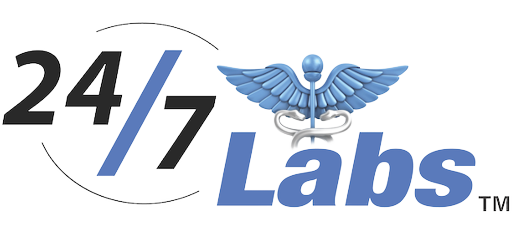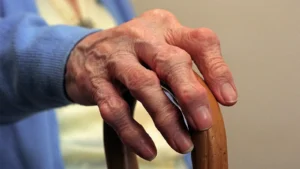A Guide To Jaundice
Jaundice is a medical condition where the color of your skin and the white of your eyes turn yellow. A high level of bilirubin in your system forms jaundice. Bilirubin is a yellow-orange bile pigment. Accordingly, the breakdown of red blood cells forms bilirubin in your body. On the contrary, jaundice is itself not a risk to your health, but it can cause several underlying illnesses. Bilirubin remains in the bloodstream after the blood removes the iron. If there is too much bilirubin it leaks into the surrounding tissues. That is called hyperbilirubinemia. Accordingly, it causes a yellow color in the eyes and skin of the affected person.
What causes jaundice
- The breakdown of red blood cells can increase by various conditions. This results in making more bilirubin in the blood system. Meanwhile, the liver cells fail to keep the process of that extra bilirubin. In some conditions the liver cells are not able to take in the bilirubin well, bilirubin builds up in the blood system.
- The liver cells are damaged sometimes. In this scenario, the cells fail to work well.
- Sometimes liver cells work in a reduced number which builds extra bilirubin.
- When large quantities of red blood cells break down, it produces more bilirubin.
With these problems in the liver cells, bilirubin can cause jaundice.
Types of Jaundice
There are three types of jaundice-
- Pre-hepatic
- Hepatic
- Post-Hepatic
Conditions that cause jaundice
- Hepatitis-
- Liver damage causes jaundice. Meanwhile, viral Hepatitis causes liver damage. Hepatitis A, Hepatitis B, Hepatitis C are the reason for liver damage that causes jaundice. For instance, when a person consumes food or water contaminated by another person with Hepatitis A, it can be transmitted to the other person.
- Contact with infectious body fluid can cause Hepatitis B. For example, sexually involving with the infected person.
- Research states that 2.7 to 3.9 million people in the USA are having the infection of Hepatitis C. Consequently, direct contact with the infected person can cause Hepatitis C.
- Hepatitis E: Hepatitis E virus causes Hepatitis E. It is a serious acute liver disease.
- Alcoholic Hepatitis: If a person consumes so much alcohol it can lead to jaundice.
- Some medicines can be dangerous to the liver as well. Such as statins.
- Liver cancer
- Thalassemia
- Gallstones
- Yellow fever
- Weil’s fever
Common signs and symptoms of jaundice
- Yellow skin
- Dark-colored urine
- Clay-colored stool
- Itching of the skin
These are the most common symptoms of jaundice. However, this may result in additional signs and symptoms –
- Nausea and vomiting
- Abdominal pain
- Fever
- Weakness
- Loss of appetite
- Headache
- Swelling of the leg
- Confusion
Newborn jaundice: Research says that around 60% of newborns in the USA experience jaunce. Newborn jaundice is one of the most common conditions of jaundice. This type of jaundice is called infant jaundice. A newborn baby’s liver is not mature enough to fight the bilirubin in the blood cells. In addition, the signs of infant jaundice start showing within 72 hours of birth.
Diagnosis
The treatment depends on the underlying cause of jaundice. As the main cause of jaundice is the increase of bilirubin in the blood, the doctors examine the history of the patient to confirm bilirubin levels. The patient also may need to go through some blood tests.
- Bilirubin Tests
- Full blood count (FBC) or Complete blood count (CBC)
- Hepatitis A, B, and C tests
- MRI, CT, and Ultrasound scans to examine the structure of the liver
- Also, a liver biopsy checks for cancer, cirrhosis, fatty liver if needed.
Treatment
- In Anemia-induced jaundice, the doctor may prescribe the patient to take an iron supplement or iron-rich foods to boost the iron in the blood.
- As a result of obstruction-induced jaundice, the doctors go through surgery to remove the obstruction.
- Also, antiviral or steroid medications are required in Hepatitis-induced jaundice.
Food routine jaundice patient should follow
- Water- If a person is suffering from jaundice, he/she should consume at least eight glasses of water a day. So, water helps your liver in filtering and flush out toxins
- Fruits and vegetables: Fruits and vegetables contain high antioxidants that help limit liver damage. Fruits and vegetables you can include in your routine -lemons, limes, grapefruits, papaya, melons, pumpkins, sweet potatoes, tomatoes, olives, carrots, beets, broccoli, ginger, garlic.
- Herbal tea and coffee: Coffee and herbal tea also contain a high amount of antioxidants.
- Nuts: Nuts contain high doses of antioxidants, vitamin E, and phenolic acid. As a result, it can be beneficial to liver function.
Foods to avoid
- Alcohol: Patients with jaundice or any other liver condition should avoid alcohol completely. It is toxic to our liver.
- Trans fats: So, some dairy products and fried, oily, fast foods contain a high level of trans fat. Studies state that people who consume a large amount of trans fat are most likely to undergo liver changes.
- Rich meats
Prevention
Liver damage is the cause of jaundice. So, it is necessary to take care of our food habits and follow a balanced diet. Avoid consuming more alcohol which may damage your liver and along with it add fruits and vegetables to your list. Middle-aged women and men, as well as newborns, are most likely to be affected by jaundice. Newborn jaundice is the most common condition in the USA. Meanwhile, jaundice does not require treatment in adults. However, sometimes one may follow some medical treatment. Therefore, people who consume excessive alcohol and have hepatitis are at risk for jaundice. So, liver damage causes jaundice. In addition to that, high consumption of alcohol leads to liver damage. However, in most cases, jaundice in adults is not a matter of risk. Therefore, a healthy diet and exercise help your liver function in a better way.



